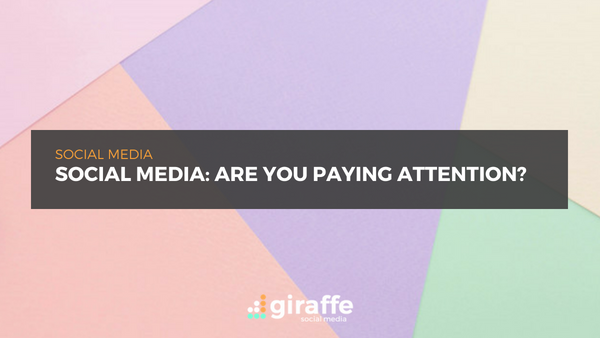As our attention spans drop, what has social media done to try to get us to stay? From Facebook’s timed articles to quick snippets from brands, social media has had to adapt to a new generation who just cannot be bothered to scroll further than the first two paragraphs.
It’s Time to Accept Our Fate
Although social media has been continuously accused of reducing users’ attention spans, it’s time to accept that people just won’t hang around for long and that brands have to evolve to keep up.
This lowered attention span has affected us beyond reading Facebook articles, as many struggle to stay on websites for prolonged periods of time or give up periods of their day to watch full Youtube videos. The average person stays on a web page for less than a minute, which means you have to put a lot of work into getting someone to see your website and continue the hard work to keep them there.
The Good Old Video Days
When social media first emerged people loved sitting and watching long videos on the Internet, even though they took a few decades to buffer and load. However, with the introduction of Vine came a new ideology of receiving content. People were only allowed to video for less than ten seconds, so users had to gather and process information and video content quickly. It was automatically a hit and sparked other social media platforms to get involved. Instagram eventually allowed users to share snippets of their videos and then Snapchat opened a whole new world of snappy and attention grabbing shareable posts. The longest videos people watch now are Netflix documentaries.
For a brand, sharing video content is highly beneficial. It’s really good for engagement and original content helps to cement a business as a thought leader. However, the video must be short, fast-paced and attention grabbing. A dreary video of someone talking about their power drill is a lot less engaging than a video of someone using it. It’s important to know your audience and understand what they want, so you can give it to them.
Reading Drills and Skills
To encourage people to read more articles through Facebook, the social media site has added estimated reading times to articles when they are shared on the platform. For example, the post will have the usual look, but with ‘3 min’ or ‘5 min’ attached too. Facebook hopes that this will deter people from clicking on and off the article because they think it will take too much time to read. When users are given an indicator of time, they will be far more likely to engage.
The Generation of Brevity
Facebook bios are essential for letting people know what your brand does and how your business works. It is important to get everything you want to say out in the first few words or sentences as brevity has become essential in short attention span times. Your Facebook bio is limited to 140 characters, meaning you have to be short, succinct and straight to the point.
Also, in blog articles, it’s important to include sub-headings and an explanatory introduction, so people know what they’re reading and can locate what they want from the content if they need to quickly. People could be deterred by big bulks of text and a serious lack of images.





